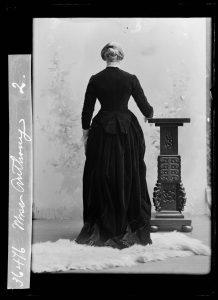Brent Staples in The New York Times:
 The suffragist heroes Elizabeth Cady Stanton and Susan B. Anthony seized control of the feminist narrative of the 19th century. Their influential history of the movement still governs popular understanding of the struggle for women’s rights and will no doubt serve as a touchstone for commemorations that will unfold across the United States around the centennial of the 19th Amendment in 2020.
The suffragist heroes Elizabeth Cady Stanton and Susan B. Anthony seized control of the feminist narrative of the 19th century. Their influential history of the movement still governs popular understanding of the struggle for women’s rights and will no doubt serve as a touchstone for commemorations that will unfold across the United States around the centennial of the 19th Amendment in 2020.
…The famous suffrage convention convened in Seneca Falls, N.Y., in 1848 featured Stanton and her partner-in-arms, Lucretia Mott, in addition to the towering figure of Frederick Douglass, the abolitionist and dyed-in-the-wool supporter of women’s rights who was on his way to becoming one of the most famous speakers of the century. Were it not for Douglass’s oratory, the historian Lisa Tetrault tells us in “The Myth of Seneca Falls,” the “controversial” resolution demanding the vote for women might actually have failed.
It became clear after the Civil War that black and white women had different views of why the right to vote was essential. White women were seeking the vote as a symbol of parity with their husbands and brothers. Black women, most of whom lived in the South, were seeking the ballot for themselves and their men, as a means of empowering black communities besieged by the reign of racial terror that erupted after Emancipation. The tension escalated in the run-up to the 15th Amendment, a provision that ostensibly barred the states from denying Negro men the right to vote. Reasonable people could, of course, disagree on the merits of who should first be given the vote — women or black men. Stanton, instead, embarked on a Klan-like tirade against the amendment. She warned that white woman would be degraded if Negro men preceded them into the franchise. Admiring historians have dismissed this as an unfortunate interlude in an exemplary life. By contrast, the historian Lori Ginzberg argues persuasively that racism and elitism were enduring features of the great suffragist’s makeup and philosophy.
More here.
